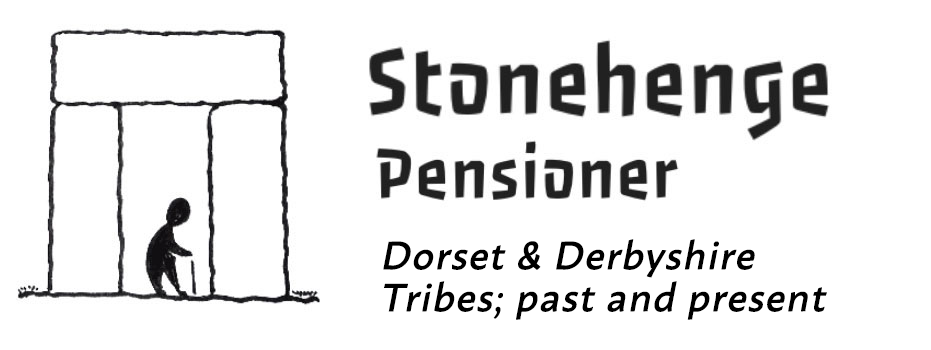What Is A DIY Funeral In The UK?
Funerals are a symphony in myth and mystery. So people feel unable to manage one themselves and need to rely on the professional funeral director. When you think about that, it’s rather odd. In our culture, funerals were always community occasions and inexpensive. Local people performed specific roles. The carpenter made the coffin, the gravedigger prepared the grave and the vicar performed the service. Women traditionally prepared the body and the family would wheel the coffin on a bier to the churchyard. The involvement of the community ensured that deaths had no criminal intent. In fact, even today, a funeral is a public affair and cannot be private to the exclusion of anyone. However, the ex-wife or mistress showing up at a funeral is testing, to say the least. An awareness of this community involvement is helpful when considering DIY funerals. So, what is a DIY funeral in the UK and why did it emerge in the 1990’s?
Professional guidance
As wealth increased in the UK, people began to use professional undertakers. These were renamed funeral directors in Victorian times. Two issues arise when you use a funeral director. The first is cost, and the second is a feeling of detachment. Consequently, the funeral can be too slick, over and done with too quickly. The UK funeral scene has also been heavily influenced by the US ‘deathcare’ industry since the 1960’s. This has seen the upselling of coffins and caskets, the introduction of (unnecessary) embalming and memorial sales. The Co-op can be one of the most expensive funeral directors around. They are no longer a socialist organisation.
Natural Burial
When I introduced natural burial in 1990, people responded in ways that changed funeral practice. Much of this influenced the DIY funeral. Coffins made of cardboard, wicker and bamboo arose, now called the eco coffin, and these could be ordered online. Funeral celebrants sprang up to take the ceremony as an alternative to the clergy. Some family members actually prepared and delivered their own service. The burial or cremation of a body was no longer a mere’disposal’. Bird watchers, beekeepers, organic gardeners and greens could create a themed funeral at a natural burial site. At this time, interest in DIY funerals blossomed. The Natural Death Centre promoted these and natural burial was even featured on BBC Countryfile.
Die DIY
During this period, the cemetery I managed sold cardboard coffins direct to the bereaved. Seeing a coffin leaving the cemetery on a roof rack was entertaining. One was on top of a Reliant Robin. When it returned, the Reliant was transformed into a hearse, the coffin propped up on the dashboard. How the family laughed. It was what the deceased wanted, and it was also inexpensive. Another family of three sons, purchased a white cardboard coffin, intending to decorate it. After lots of impassioned discussion, they decided to inscribe the coffin with their late father’s favourite sayings. They also took the service themselves. There, in big black letters, all down the sides of the coffin, it stated, “shut that bloody door”.
R.I.P. Off! or The British Way of Death
This is the title of the book I wrote in 2010. Although it sold over 500 copies, it did not take the world by storm. It is still available as an ebook on Amazon Books. It has 30 chapters which helps the reader to understand how the funeral industry operates. This insight enables the reader to arrange a DIY funeral themselves, or to be more savvy when using a funeral director. I did it this way because I knew that the ‘how to’ books on funerals do not sell. But then, neither did my book!
What is a DIY funeral in the UK?
The law gives the next of kin or executor the right to possession of the body, and they can now act as the funeral director. They will register the death with the Registrar of Births, Deaths & Marriages. They then book a day and time for the funeral at the cemetery, crematorium or natural burial ground. The fees will need to be paid up front and forms filled in. They will obtain a coffin and collect the body from the mortuary using a van or estate car. This can be done on the day of the funeral if having the body at home is a problem. They can write and deliver the service themselves, or use a celebrant or minister.
Mean spirited
Very often, those arranging the funeral find themselves upset by mean spirited people who see such a funeral as cheapskate, or lacking dignity. One of the problems for the bereaved is that it is sometimes the deceased who left a request for a DIY funeral. They, of course, won’t be there to advise or help at the time. The coffin has to be carried by the bearers. In the past, only men carried coffins. Most funeral directors still follow this tradition, because they are misogynistic bastards. At my sister’s funeral, we had nieces as bearers. A DIY funeral is a hands-on experience and very satisfying. Bearing a coffin is a privilege, a tribute, an honour. But, if the deceased was heavy, add the weight of a coffin and it might demand six bearers.
Charter for the Bereaved
If you are lucky, your local cemetery or crematorium will have adopted the Charter for the Bereaved. Most council operated premises have done this. I wrote the Charter back in the mid 1990’s for the Institute of Cemetery and Cremation Management (ICCM). It sets standards for the bereaved for all funerals. Such cemeteries and crematoria must accept DIY arrangements and may provide a leaflet about how to arrange a local funeral. Some private crematoria will not accept DIY funeral bookings.
More help
The Good Funeral Guide is another source of help. This internet site sprang from Charles Cowling’s book of the same name. He also conceived of a funeral cooperative, a local voluntary group that would support families and partners arranging a funeral. Unfortunately, this never took off. Such a group could have a hearse available or a Volvo estate car, the perfect coffin carrying vehicle. Such support also avoids the need for professional funeral directors. The death would no longer be a crisis purchase which exposes the bereaved to commercial pressure.
Keep it simple
There have been a lot of changes to the funeral industry in the past few years. One of which is the low cost Direct Cremation. This option has been used far more recently because of the restrictions on funeral arrangements due to the pandemic. Some people who might have arranged a DIY funeral may now take this option. Such funerals can be simple but not environmental. In part, that is because eco coffins can be expensive, especially those hand crafted in willow. But, when you use one you are putting your money into rural skills and business. At all funerals, people are now tending to avoid hothouse flowers, which are expensive and have a huge carbon footprint. British flowers are available, as mentioned in this post.
Rest in Peace
My photo of an old headstone is inscribed RIP. That reminded me that in my book RIP Off! I included a tongue in cheek glossary. It contains some of the terms we use in the death world. RIP is defined as, regularly increased prices. The term At rest is, the calm before the account arrives. The coffin is, a very cheap box expensively veneered.




